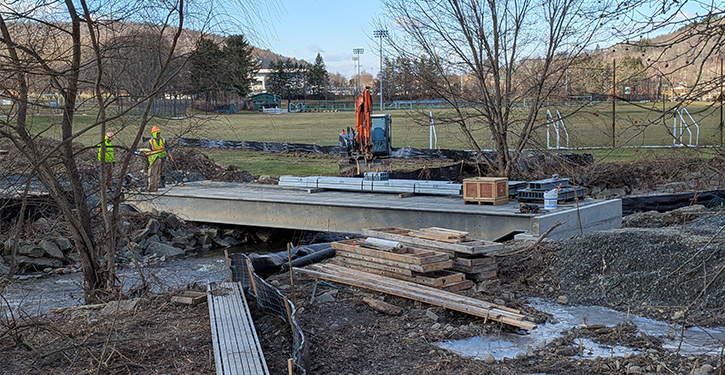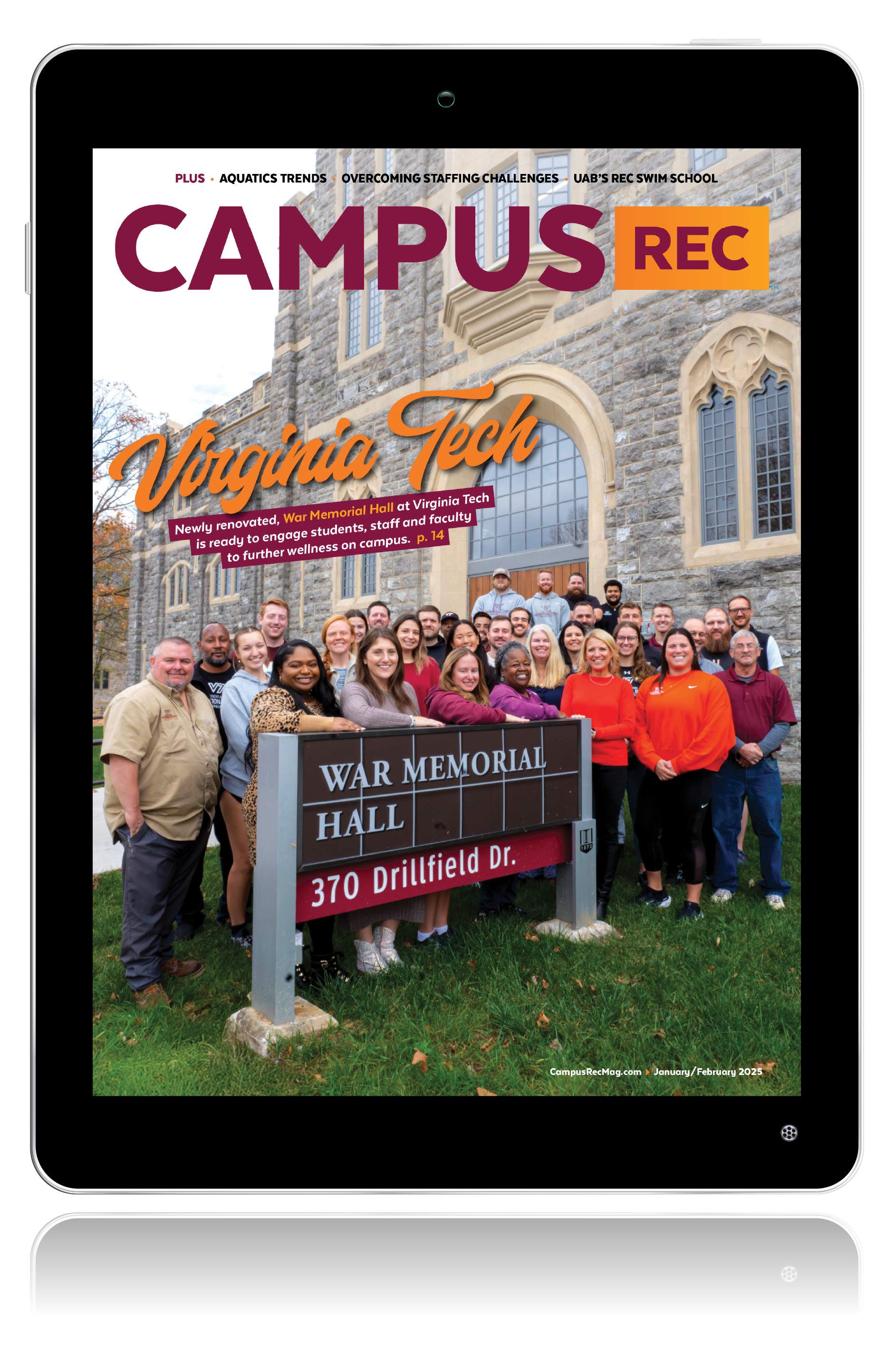How a facility development project at Binghamton University is transforming Campus Recreation.
With the East Gym being the oldest building on campus and enrollment nearing 19,000 at Binghamton University in Vestal, New York, there were concerns of the space being able to accommodate students. After 10 years in the making, a facility development project is underway to address this persistent challenge.
“It’s tight in our fitness spaces right now,” explained Tom St. John, the director of Campus Recreational Services at Binghamton University. “Our staff is constantly monitoring how many people we have and that we’re complying with room capacity, especially during the first couple of weeks of each semester. We have to turn away folks or have them hang out in the lobby then wave them in as others leave. It’s a good problem to have, but we’re fortunate to have a solution in the works.”
The 75,000-square-foot expansion includes adding 40% more fitness space which will serve a wide variety of students. Part of the area is being repurposed with 60% of the flooring being turf and the other 40% being rubberized, the space will play into the upward trends of functional and strength training which students are increasingly interested in. New equipment will also be brought in to complete the renovation.
“We’re excited to have this opportunity and outfit this expansion with new equipment,” said St. John. “We’re overhauling our cardio wing and appreciate being in a position to not only have the facility but equip it in the right way. When the doors open, students will be able to come in and just play.”
A Holistic Vision at Binghamton University
The new facility goes beyond traditional recreation. Other added areas include an elevated track overlooking new basketball and volleyball courts and four additional multi-purpose rooms. These spaces will support individual workouts, group fitness classes, and other development or educational opportunities.
Designed to be a hub for holistic well-being, the new spaces aim to foster emotional, social and physical growth. For example, the multi-purpose spaces may host academic classes, student development training, and community events including career fairs and health expos. The integration of these elements underscores a commitment to creating a vibrant, welcoming environment.
“This space will be more than a gym,” explained St. John. “It’s going to be a hub on campus, a point of pride and a really neat spot where students, faculty, staff and community members can look forward to coming and enjoying their days and year to come.”
Solving the Now to Look Toward the Future
One of the biggest concerns with the project was the potential disturbance of campus and local day-to-day operations with construction equipment coming and going. Binghamton worked with town officials and the U.S. Army Corps of Engineers to find a solution. The result has been the construction of a temporary access bridge to minimize disruption to traffic and environment.
“It was a terrific solution to a problem,” explained St. John. “Once the problem had presented itself, folks started talking through it. When this course of action was identified and approved, the next steps happened in three weeks. It worked out well and we’re happy with it right now.”
This collaborative approach underscores St. John’s hope for the facility to connect groups and increase Campus Recreation’s impact. The renovated facility reflects a forward-thinking approach that will help the department best serve students for years to come.
“For us as campus recreation professionals, the best thing we can do is figure out a way to say ‘yes’ when our campus partners want to come into our facility,” remarked St. John. “To me, it’s super exciting knowing we’re going to be able to say ‘yes come on in.’”










